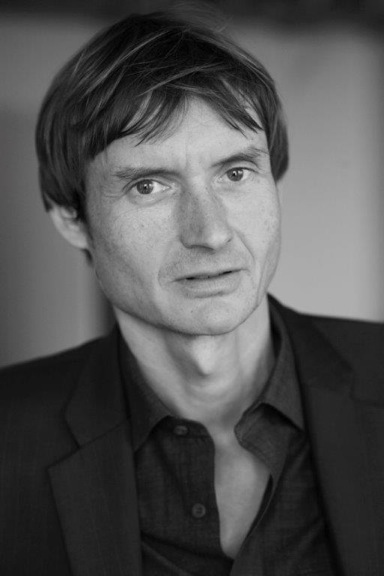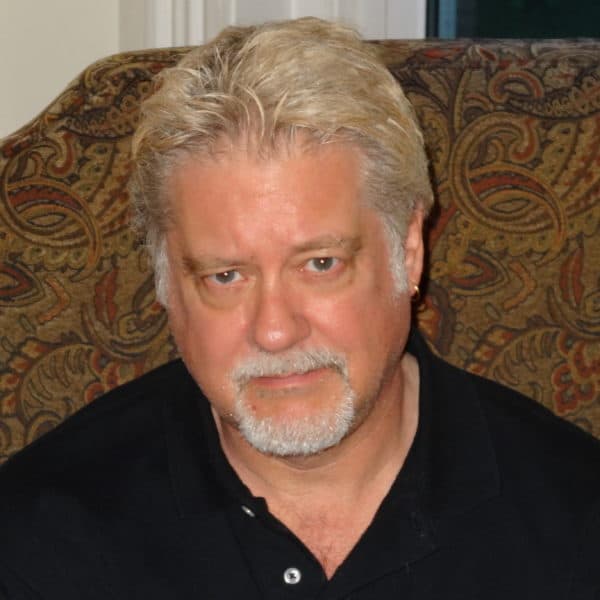Advertisement
German Author Examines Untold History Of Nazi Drug Use In 'Blitzed'

Arguably, more words have been spilled onto the page about Adolf Hitler than any person in the 20th century. Seven years ago, Berlin-based novelist Norman Ohler became convinced there was more to say.
In fact, there was a crucial element of Hitler’s sociopathic behavior historians had downplayed or missed entirely: drugs. Mind altering drugs. Not just the drugs Hitler was taking but drugs the German public began taking en masse in the 1920s, and the drugs — specifically a newly invented methamphetamine called Pervitin — that fueled the German army, particularly during the "blitzkrieg" surge into France and Belgium in May of 1940.
Out of Ohler’s research came "Blitzed: Drugs in the Third Reich," the German novelist’s first book of non-fiction. In uncovering the rampant drug use endemic to the war effort, Ohler says he found a metaphor for the Nazi era.
“I tried to examine the whole Nazi era as having the curve, in a way, of a drug experience,” the German-born Ohler says on the phone from New York. “Which was a strong high coming on in '33 to '39. Everyone is high, saying ‘Heil!’ and living in a dream world, in a ridiculous, racist bubble that then burst.
"The Nazis were trying to project themselves as a drug. They said ‘We’re not a normal political party, we’re a movement. You have to take part and jump into the water with us and we’re going to take you to amazing places.’ So, that’s why I compared the whole legacy as a drug trip. And every drug trip obviously has its comedown."
“Blitzed” was published in 2015 in Germany, where it was a best-seller. It came out last year in the U.K. and on March 7 this year in the U.S.

Ohler, 47, had heard rumors about Hitler’s drug use for years, finding things on the internet that “were not very precise and they tended to contradict themselves. It was full of rumors about the Nazis. I didn’t take that so seriously, but it was an indicator. I really was sure of the story the first time when I was at Koblenz at the federal archives of Germany reading through the notes of Theo Morell, personal physician of Hitler.”
When Ohler was starting to test his early research, he says he got confirming support at the military archives in Breisgau, where he talked to an expert on meth abuse in the German army. “After speaking to him,” says Ohler, “and being able to check out his research, my understanding got more profound.”
What super-powered the Nazi army — troops and officers alike — was Pervitin, a pill invented by the Germans and churned out by the millions. “It was a key component of a fighting army and air force,” says Ohler. “It kept the aggression going and that’s something we’ve learned about in subsequent years — the use of speed in the military — but this was a new thing they exploited to the maximum.”
Advertisement
One mystery about all this: With all the information available, why had no one ever dug as deep as Ohler did?
“I spoke with Hans Mommsen, a leading German historian on National Socialism, who was helping me with the book,” Ohler says, “and he said ‘We historians have no idea about drugs.’ I guess it might be one of the reasons. I think there are several reasons: the fear of [the drug use] excusing the Nazis — that would have been a reason in the '70s to not look at the topic. The early historians of National Socialism had to break ground and put the big things into perspective and probably drugs weren’t on their radar. They were just afraid to include that into their evaluation. I think many historians think it’s trivial.”
Ohler makes it clear that he’s not suggesting Nazi drug use as any sort of justification for the massive carnage they spread. “It didn’t come from the drugs,” he says. “The drugs are not a connection with the creation of the evil, the ideology, the war plans and the genocide. But the drugs are being used to accelerate, to be able to do certain things.”
In terms of research, it didn’t hurt that Ohler had some drug experience of his own, being part of the Germany’s electronic music scene of the '90s. He says he did “recreational drugs,” nothing with the destructive power of what the Nazis took. “Even if you don’t take certain drugs,” Ohler says, “you might know people who have taken, for example methamphetamines or opioids. I’ve spoken to some people that I know and asked them.”
This is the closest, Ohler says, that he got to crystal meth: “I wanted to have a package of crystal meth in my desk and I asked a dealer that I know and she said she didn’t want to have anything to do with it, but then she knew another dealer who was selling it. She brought me one gram in a bag and the dealer, without knowing me or knowing why I wanted it, brought a xeroxed copy of the [Third Reich package design] of Pervitin from 1937. It was really surprising — a history conscious dealer! I do not like methamphetamine, but I liked having it close by to look at.”
“I know one guy who has come across an original Pervitin packet,” Ohler continues, “and he claims that he used them and it was still working even though it was decades old. He described the drug effect as cleaner than street meth.”
“Blitzed” did not start out as a historical work. Ohler had published three novels. His first, “The Quota Machine,” is a detective story set in early ‘90s New York City — "I programmed it as a hypertext, the first hypertext novel worldwide" — published in 1998. The second, “Mitte,” Ohler describes as “a ghost story about gentrification” in Berlin (2001). Two years later came “Ponte City,” which is the story of a young South African woman who moves from Soweto to Johannesburg and then gets into all kinds of trouble trying to live the free life in the new South Africa.”
When he began researching what would become “Blitzed,” Ohler was envisioning it as his fourth novel. But he found the material “too hot,” as he told Newsweek, “to water it down in a fictional work.”
Upon deciding he was writing about history, Ohler intended to start in 1933, with the Nazis rise to power, but Mommsen, urged him to go back further. “I started in 1805, briefly mentioned that a German chemist refined morphine as the active ingredient in opium,” says Ohler. “This is kind of the starting point for the chemical industry all over the world, But [it happened] first in Germany, where pharmacies turn into companies developing pharmaceuticals in the 1920s, when drugs are widely available in Germany. And then there’s a break when the Nazis take power. At first, they introduce the ‘War on Drugs’ by saying we have to stop doing drugs and then obviously, the new drug methamphetamine comes into play and contradicts the ideology.”
During the five-year research and writing process, did Ohler ever get what might be called “Hitler fatigue?”
“Well,” he says, “I got Nazi fatigue when I researched the navy’s search for a wonder drug and the tests they did in the Sachsenhausen concentration camp. I thought ‘This is really dark. I want to get away from this.’ Then, I tended to apply a sort of dry humor to the book in the writing process and it seems what many readers ... appreciate. It kept me on the brighter side of things also.”
The corpulent, sycophantic Morell becomes a central figure in Ohler’s story, a Dr. Feelgood who’s more than just a villainous enabler and profiteer. Going through Morell’s notes, Ohler says he found “they were very detailed and they were telling a story I had not heard before. Very fascinating, the relationship between him and Hitler and what is revealed. He was with Hitler all the time.”
Ohler posits that Hitler’s embrace of drugs, ostensibly begun to treat his severe stomach pain, contributed to his irrational decision-making in terms of strategy. And as the war became increasingly unwinnable, Ohler writes that a very ill Hitler was propped up in his bunker by a panoply of drugs supplied by Morell. Some were shots of vitamin, hormone and steroid cocktails, but others much more potent and potentially mind-scrambling. Nevertheless, Ohler writes, they allowed Hitler to present himself to his people with the illusion of strength and the falsehood that Germany was on the verge of victory.
What Hitler loved most, says Ohler, is a drug called Eukadol, an opioid known generally as oxycodone. Synthesized from raw opium, it had twice the pain relieving as morphine. Ohler writes that it achieved “a euphoric state significantly higher than that of heroin.” In addition, Morell would combine Eukadol with cocaine, creating what we now call a “speedball,” the combo that killed John Belushi.
Ohler quotes junkie/author William Burroughs in his 1959 book, “Naked Lunch”: “Eukodol [sic] is like a combination of junk and C [cocaine]. Trust the Germans to concoct some truly awful s---.”
In retrospect, of course, the hypocrisy is maddening. Hitler — a non-smoking vegetarian who railed about keeping German minds pure of drug contamination — was secretly pumped up to the gills, likely going back to the fall of 1941.
Ohler says Morell was an opportunist, a man who joined the Nazi party when rumors started to float around that he was Jewish. “When Hitler offered him the job,” Ohler says, “he was over the moon because he became the personal physician of the most powerful man in Europe. Hitler gave him a mansion and gave him a factory where he could produce his stuff. Hitler was revered at the time; most Germans loved Hitler. And Morell he continued to profit from the system. He was not involved in war crimes or at least I couldn’t find documents. He liked Hitler, Hitler liked him, he made a lot of money. Everyone envied him.”
Hitler committed suicide in his bunker as the end of the war neared. Morell survived, then was captured by the Americans and imprisoned for two years. They decided they wouldn’t try him at Nuremberg because “they apparently couldn’t connect him to war crimes.”
He may also have been insane, although Ohler says, "whether he was insane or whether he played it well, we can’t say. He was very much focused on his patient and once his patient wasn’t there anymore he lost his life.”
After he was released from prison, Ohler says, “He never tried to start a new career. He could have gone back to Berlin and become a doctor, but his health was really bad. It’s a bit of mystery what happened those two years the Americans had him but he certainly didn’t start a new life. He got out and only lived for a few months.”
“Blitzed” closes with Morell dropped outside the train station in Munich. Ohler writes: “Morell cowered there, the most powerful man with the gold rods of Asclepius on his collar, now in a worn-out coat, shoeless on the bare cobbles, until a half-Jewish Red Cross nurse took pity on him and put him in a hospital in Tegernsee, where he died on May 26, 1948.”
